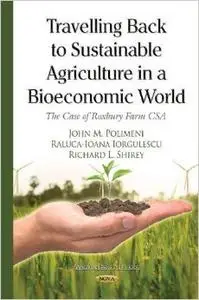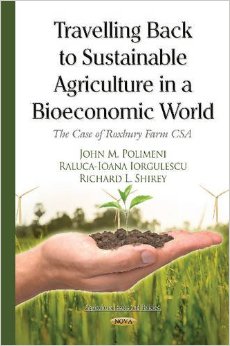Travelling Back to Sustainable Agriculture in a Bioeconomic World: The Case of Roxbury Farm CSA by John M. Polimeni
English | ISBN: 1634633768 | 2015 | 147 pages | PDF | 2 MB
English | ISBN: 1634633768 | 2015 | 147 pages | PDF | 2 MB
In an increasingly interconnected and bioeconomic world, agriculture is one of the vital and extremely complex links; on one hand, it provides food for the world while, on the other hand, it brings considerable environmental degradation. The negative by-products of agriculture have come to the forefront in recent years. As a result, agricultural production has undergone considerable scrutiny resulting in strong consumer movements for sustainable agriculture. However, many countries cannot worry about the environmental aspects when they do not produce enough food to be secure because farmers cannot compete with the artificially low prices of food due to the subsidies from developed countries.
However, this trend is unlikely to continue as farm operations in developed countries must increase the amount of inputs, such as fertilizer, to maintain their levels of production. Furthermore, agricultural subsidies are likely to end due to the national debts of many countries. Therefore, it becomes more and more accepted that, for a sustainable agriculture, rural regions and developing countries will have to use local, traditional knowledge. This would support economic development and food security, especially since consumers are increasing demand for sustainably grown food.
One form of sustainable agriculture that can potentially result in economic growth is community supported agriculture (CSA). CSA is a relatively new concept that develops a relationship between a farmer and consumers that could include elements of monetary exchange, work commitment, and volunteer opportunities. This book explains what a CSA is, the various types of CSAs that exist, and the history of CSA. A theoretical concept of supply and demand of CSA is presented to offer an explanation of how the consumer-producer relationship works. To illustrate these concepts, a case study, using a series of surveys of members and interviews of the farmer of one of the largest CSAs in the United States, Roxbury Farm CSA, is presented. The book also discusses how the CSA concept can be utilized to generate economic growth in rural regions and developing countries. The book concludes with a concise outline of some of the future problems that we consider to be the most important in regards to agriculture and what we propose as possible solutions.
My nickname - interes



